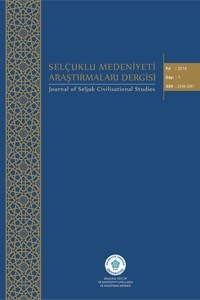
The Turkish word “dügün” meaning wedding is etymologically derived from the Turkish word “tügün” which means “to knot, to tie”. Although it is expressed with different words in various languages, since old times, wedding has been the ceremony for announcing/celebrating the act of marriage that legally and religiously approves a man and woman’s living together. Because it also reflects societies’ not only understanding of having fun, customs and traditions, but also beliefs, it bears a particular importance in sociological aspect as well. Thus, after Turkish people’s acceptance of Islam, the ceremony organized after circumcision applied to boys has also been called wedding/circumcision wedding. For this reason, weddings in Anatolia must be divided into two groups as marriage and circumsition. The essential elements of a wedding held for either marriage or circumcision in the Anatolian lands in the 11th-14th century are banquet and fun. In the wedding ceremony organized for weddings, on the other hand, asking permission to get married from the girl’s family, dowry and marriage contract are the other common points. However, in implementations of these common points, there might be differences due to cultural and religious differences (such as dowry, bride wealth, church wedding). However, it bears similarity to take back the dowery particularly those given as immovable properties such as land or castle, when marriage is terminated in whatsoever manner. In addition to these, we also see that not only there are customs which are still valid in the Anatolian territories such as bride wealth, bride parade, price for seeing the bride’s face, exchanging gifts (such as when asking the bride’s family’s permission, before and after the marriage ceremony), but also there are some values we lost such as including valuable books in the bride’s dowry.

| Relevant Articles | Author | # |
|---|
| Article | Author | # |
|---|